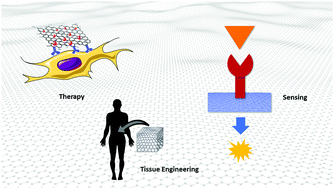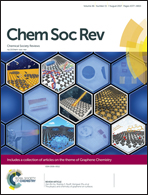Promises, facts and challenges for graphene in biomedical applications
Abstract
The graphene family has captured the interest and the imagination of an increasing number of scientists working in different fields, ranging from composites to flexible electronics. In the area of biomedical applications, graphene is especially involved in drug delivery, biosensing and tissue engineering, with strong contributions to the whole nanomedicine area. Besides the interesting results obtained so far and the evident success, there are still many problems to solve, on the way to the manufacturing of biomedical devices, including the lack of standardization in the production of the graphene family members. Control of lateral size, aggregation state (single vs. few layers) and oxidation state (unmodified graphene vs. oxidized graphenes) is essential for the translation of this material into clinical assays. In this Tutorial Review we critically describe the latest developments of the graphene family materials into the biomedical field. We analyze graphene-based devices starting from graphene synthetic strategies, functionalization and processibility protocols up to the final in vitro and in vivo applications. We also address the toxicological impact and the limitations in translating graphene materials into advanced clinical tools. Finally, new trends and guidelines for future developments are presented.

- This article is part of the themed collections: Graphene Chemistry and Primer


 Please wait while we load your content...
Please wait while we load your content...